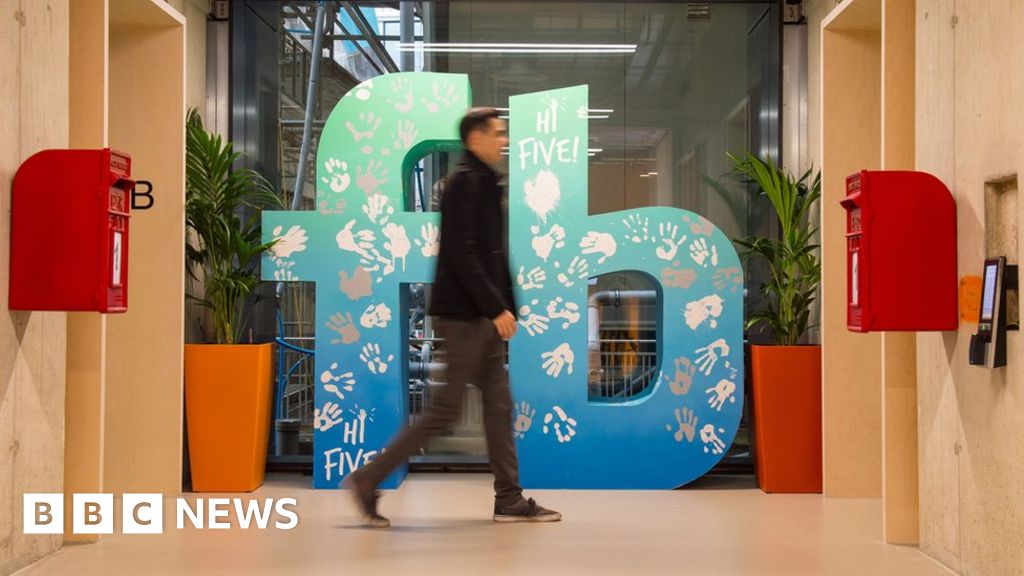Bonus Pay Gap Revealed At Facebook UK

 Image copyright
PA
Image copyright
PA
Women working for Facebook's UK division are paid bonuses worth less than 60% of those their male colleagues receive, despite a similar proportion receiving some kind of top-up award.
The median gender bonus pay gap at the business is 41.5%, according to figures submitted to the government.
However, the equivalent gap for hourly pay was much smaller - 9.9%.
That means when comparing median hourly rates, Facebook's female staff earn 90p for every £1 that its men earn.
That headline figure compares favourably to Google UK, which reported a 16% median hourly rate gender pay gap earlier this week.
Facebook employs about 1,500 people in the UK.
Its data states that 87.8% of its male workers received a bonus payment, compared with 86.3% of its female employees.
It told the BBC that part of the reason there was such a big gap in the amount they received was because a higher proportion of its engineering teams and top-level executives were male than in other areas of the business.
"Technical roles generally have a higher market rate than other positions due to their more specialised skills, but also the higher rate of demand for those skills in the marketplace," said Fiona Mullan, the company's human resources chief for Europe, the Middle East and Africa.
"And the same would be true for leadership positions."
She said the company hoped to tackle the discrepancy, but that would involve more females being encouraged to study relevant subjects at school and university.
"It really requires a back-to-basics approach, and will require more than the efforts of Facebook to change fundamentally the difference between the representation of men and women in the workplace particularly in technical careers," said Ms Mullan.
"This is a societal issue."
Organisations with more than 250 workers have until 4 April to publish their own pay gap data. The figures are accessible to the public via a government website.
How do we measure a pay gap?
Companies are required to report their pay gap in two ways: mean and median.
The mean is worked out by adding every person's salary together and dividing by the total number of employees.
The inclusion of a highly paid chief executive can make the average salary at a business appear much higher than it is, since the highest paid staff in a business typically earn much more than the lowest paid workers.
The median is worked out by putting every person's salary in order from highest to lowest, and focusing on the salary right in the middle of the range.
That means half the staff will earn less than the median salary, and half the staff will earn more.
Since there are often fewer women in higher-paying roles than men, the median can better reflect the typical experience of men and women at a business.
However, the mean can also be a useful way of reflecting the lack of women in high-paying roles.
From Chip War To Cloud War: The Next Frontier In Global Tech Competition
The global chip war, characterized by intense competition among nations and corporations for supremacy in semiconductor ... Read more
The High Stakes Of Tech Regulation: Security Risks And Market Dynamics
The influence of tech giants in the global economy continues to grow, raising crucial questions about how to balance sec... Read more
The Tyranny Of Instagram Interiors: Why It's Time To Break Free From Algorithm-Driven Aesthetics
Instagram has become a dominant force in shaping interior design trends, offering a seemingly endless stream of inspirat... Read more
The Data Crunch In AI: Strategies For Sustainability
Exploring solutions to the imminent exhaustion of internet data for AI training.As the artificial intelligence (AI) indu... Read more
Google Abandons Four-Year Effort To Remove Cookies From Chrome Browser
After four years of dedicated effort, Google has decided to abandon its plan to remove third-party cookies from its Chro... Read more
LinkedIn Embraces AI And Gamification To Drive User Engagement And Revenue
In an effort to tackle slowing revenue growth and enhance user engagement, LinkedIn is turning to artificial intelligenc... Read more


